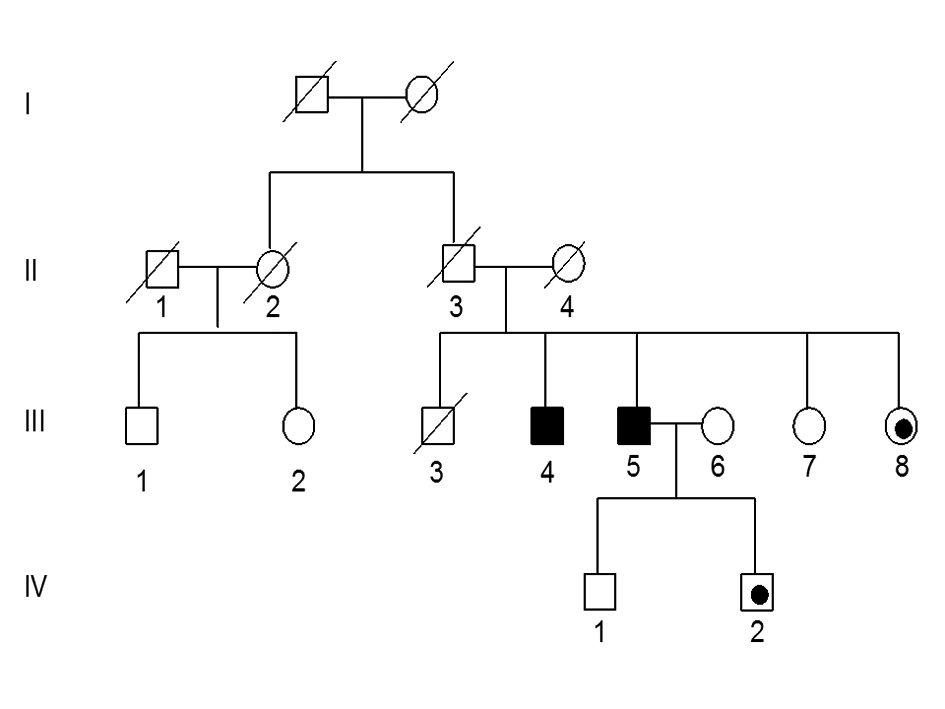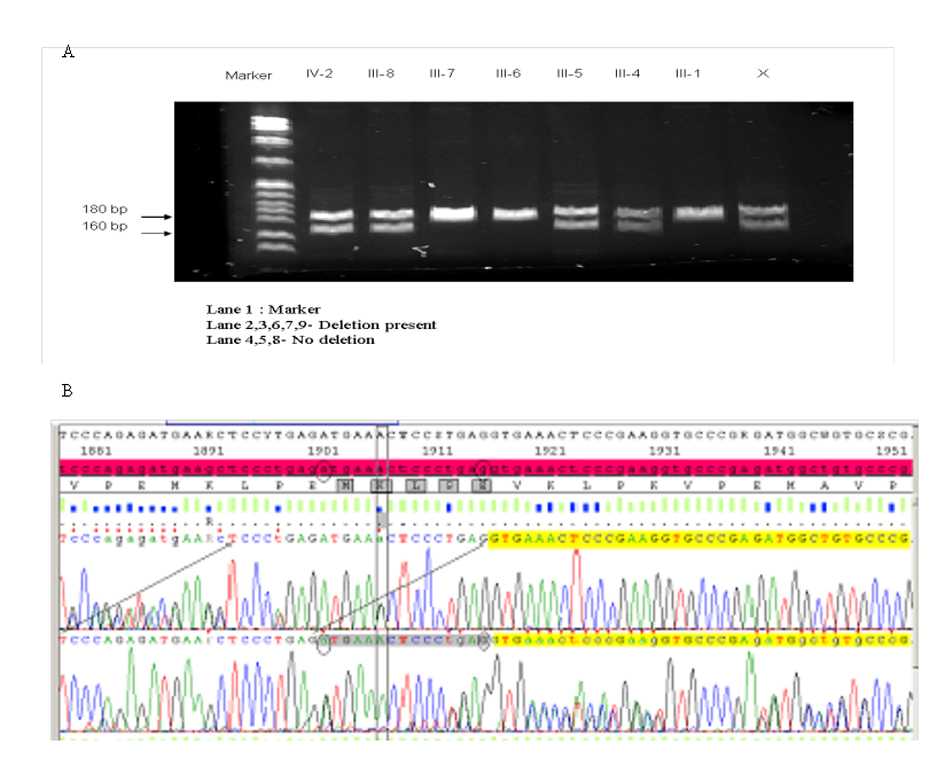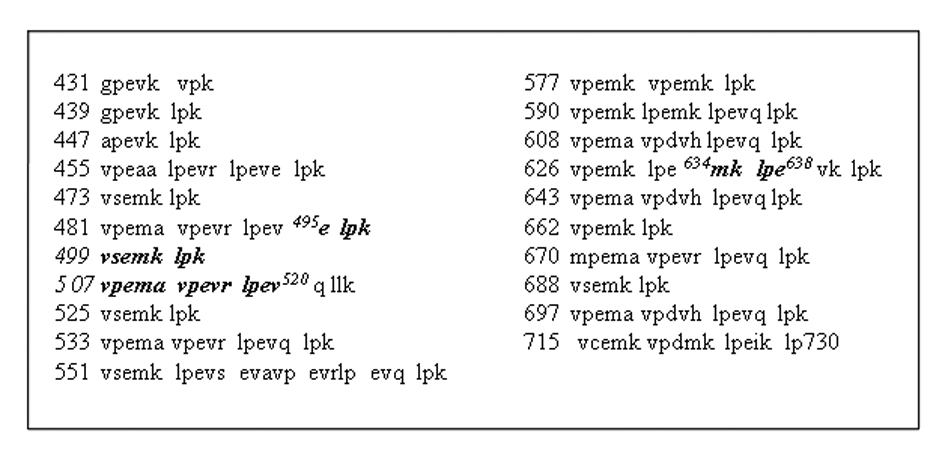
Figure 1. Pedigree of family with adult onset CMT disease. Squares indicate males, circle females, dark fill indicates affected individuals with deletion mutation, black dot indicates individuals with the deletion but not confirmed clinically.
| Journal of Neurology Research, ISSN 1923-2845 print, 1923-2853 online, Open Access |
| Article copyright, the authors; Journal compilation copyright, J Neurol Res and Elmer Press Inc |
| Journal website http://www.neurores.org |
Original Article
Volume 2, Number 6, December 2012, pages 235-243
Analysis of Association of Deletion in the Repeat Region of the Periaxin Gene With Late Onset Motor Neuropathy
Figures



Tables
| Nerve | Distal latencies, ms (nl) | Response amplitude, mv | Conduction velocity, m/s | F-wave latency, ms | Comments |
|---|---|---|---|---|---|
| NR: no response. | |||||
| Motor | |||||
| Median | (< 4.4) | (> 4.0) | (> 50) | (< 30) | |
| Right | 4.2 | 8.1 | 51 | 29 | |
| Ulnar | (< 3.3) | (> 3.5) | (> 50) | (< 30) | |
| Right | 2.2 | 7.9 | 50 | 31 | |
| Peroneal | (< 6.2) | (> 2.6) | (> 40) | No response recording the extensor digitorum brevis, temporal dispersion recording the tibialisanterior muscle | |
| Left | 35.6 | 0.6 | 52 | ||
| Right | 8.9 | 0.2 | 34 | ||
| Tibial | (< 6.0) | (> 4.0) | (> 40) | ||
| Left | 5.7 | 4.2 | 43 | 54.3 | |
| Right | 5.2 | 3.4 | 41 | 55.4 | |
| Sensory | |||||
| Sural | (> 6.0) | (> 40) | |||
| Left | 5 | 35 | |||
| Right | 5 | 37 | |||
| Superficial Peroneal | (> 6.0) | (> 40) | |||
| Right | 7 | 35 | |||
| Median | (> 20) | (> 50) | Recording digit 2 | ||
| Right | 10 | 44 | |||
| Ulnar | (> 17) | (< 50) | |||
| Right | 4 | 43 | |||
| Radial | (> 15) | (> 50) | |||
| Right | 13 | 56 | |||
| Nerve | Distal latencies, ms (nl) | Response amplitude, mv | Conduction velocity, m/s | F-wave latency, ms | Comments |
|---|---|---|---|---|---|
| NR: no response. | |||||
| Motor | |||||
| Median | (< 4.4) | (> 4.0) | (> 50) | (< 30) | Temporal dispersion in the proximal nerve segment bilaterally |
| Left | 4.9 | 4.4 | 44 | 34 | |
| Right | 5.2 | 3.5 | 47 | 31 | |
| Ulnar | (< 3.3) | (> 3.5) | (> 50) | (< 30) | Prolonged F-wave latencies |
| Left | 6.6 | 1.7 | 39 | 42 | |
| Right | 6.4 | 1.2 | 42 | 36 | |
| Peroneal | (< 6.2) | (> 2.6) | (> 40) | NR | No response recording the extensor digitorum brevis, minimal response recording the tibialis anterior muscle |
| Left | NR | NR | NR | ||
| Right | NR | NR | NR | ||
| Tibial | (< 6.0) | (> 4.0) | (> 40) | NR | |
| Left | NR | NR | NR | ||
| Right | NR | NR | NR | ||
| Sensory | |||||
| Sural | (> 6.0) | (> 40) | |||
| Left | 1.0 | 35 | |||
| Right | 0.8 | 34 | |||
| Superficial Peroneal | (> 6.0) | (> 40) | |||
| Right | 4.7 | 25 | |||
| Median | (> 20) | (> 50) | |||
| Left | 16.7 | 40 | |||
| Right | 18 | 45 | |||
| Ulnar | (> 17) | (> 50) | |||
| Left | 5.0 | 36 | |||
| Right | 1.6 | 46 | |||
| Radial | (> 15) | (> 50) | |||
| Left | 18 | 43 | |||
| Right | 11 | 40 | |||